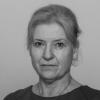Palliative care and the pursuit of cure
At the end of their life, cure is less often an important treatment aim for patients with cancer than for patients with another disease. For only a small number of patients palliation as well as cure is a treatment aim, as a publication by researchers at NIVEL and VUmc shows in the British Journal of General Practice.
Palliation involves reducing the patient’s suffering. Palliative care is aimed at making the last period of life as comfortable as possible and reducing pain and other symptoms for both patients with an incurable disease and their family. The palliative stage starts with the diagnosis of a life-threatening disease. At first, the patient will get treatments to cure the disease and to lengthen life. As the end of life is approaching, the accent in care shifts increasingly to palliative care. Little is known about the timing of this shift and the focus on the two diverse treatment aims at the same time. The researchers studied treatment aims in people with cancer and other life threatening diseases during the last three months of their life. The symptoms of people with a heart disease or pulmonary disease fluctuate more than those of people with cancer. Therefore, the aims of treatment were expected to vary between patient groups during the last period of life.
Cure
For almost all patients with a non-sudden death cause, cure and life prolongation as treatment aims became gradually less important. In the last two to four weeks before death, palliation was an important treatment aim in 89% of the patients and during the last week even in 95%. However, for 7% of the patients in the last week of their life, cure was still an important aim. Most often this concerned people suffering from heart diseases and pulmonary diseases. Often these patients did also receive palliative care at the same time. Anneke Francke, programme coordinator at NIVEL: “Our study shows that for a small number of people ‘cure’ continues to be treatment aim, even for people that will soon die. Continuing to pursue cure does, however, not exclude the attention for reducing suffering and making a patient comfortable as well.”
Research
This study used data from NIVEL’s GP sentinel stations. The sentinel stations Continuous Morbidity Registration are a representative group of 59 Dutch GPs in 42 practices. Their patient population consists of around 0.8% of the Dutch population and is representative regarding area and distribution over cities and country side. The GPs in the sentinel stations report every week or every year about the occurrence of a number of diseases, events and interventions that are missing in routine-registrations.
Funding
- ZonMw
Cooperating partner
- EMGO+/ VUmc
- Vrije Universiteit Brussel

